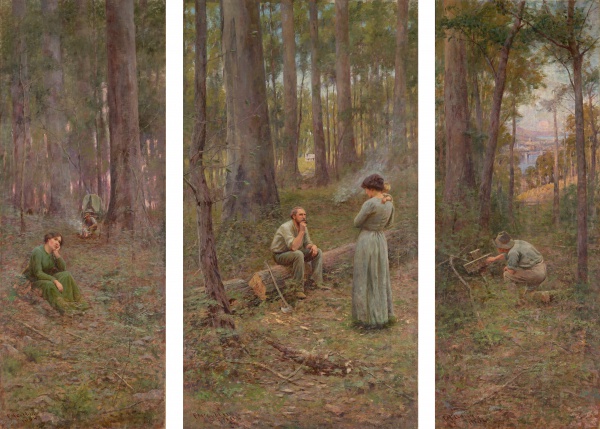Facts About The Pioneer
"The Pioneer" is a captivating triptych painted in 1904 by Australian artist Frederick McCubbin. The artwork poignantly narrates the story of a free selector and his family forging a life in the Australian bush. In the left panel, the couple is depicted selecting their land. The central panel advances in time, showing the woman holding a baby, symbolizing growth and progress. The right panel, featuring a man standing by a grave, subtly indicates the passage of time and life's inevitable cycles.
McCubbin created this work near Melbourne, drawing inspiration from his surroundings and using local individuals as models. The painting is now part of the National Gallery of Victoria's collection and is proudly displayed in Melbourne's Federation Square.
There has been much debate over the true meaning of "The Pioneer" as McCubbin never revealed his intended interpretation, leaving it open to the viewer's imagination. First exhibited in 1904, the painting was later acquired by the National Gallery of Victoria. It is widely regarded as a masterpiece of Australian art, capturing a sense of national pride and optimism.
"The Pioneer" continues to influence contemporary art. For example, artist Anne Zahalka created "Immigrants 2" a piece inspired by McCubbin's painting to explore themes of exclusion and national identity. Understanding McCubbin's technique, materials, and the historical context of his time enhances our appreciation of this significant artwork even more.
